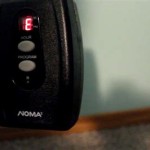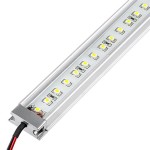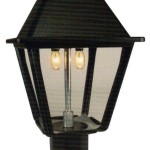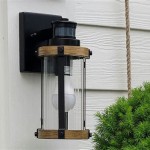Outdoor Garden Lights: The Versatility of 12V Systems
Outdoor garden lighting enhances the aesthetic appeal of landscapes, provides safety and security, and extends the usability of outdoor spaces into the evening hours. Among the various voltage options available, 12V garden lights offer a compelling combination of safety, efficiency, and ease of installation, making them a popular choice for homeowners and landscape professionals alike. This article explores the key aspects of 12V outdoor garden lighting, covering its benefits, installation considerations, maintenance requirements, and potential applications.
Understanding 12V Outdoor Lighting Systems
The term "12V" refers to the operating voltage of the lighting system. Unlike standard household voltage (typically 120V or 240V), 12V systems utilize a lower voltage. This lower voltage is often achieved through the use of a transformer that steps down the higher household voltage to the safe and manageable 12V level. The transformer is a critical component of the system, ensuring that the lights operate at the correct voltage and preventing potential electrical hazards. The use of 12V is particularly advantageous in outdoor environments where exposure to moisture and potential contact with people and animals increases the risk of electric shock. The reduced voltage significantly minimizes this risk.
Furthermore, 12V systems are typically easier to install than their higher voltage counterparts. Many 12V lighting kits come with simple plug-and-play connections, eliminating the need for complex wiring and specialized electrical skills. This user-friendly installation process allows homeowners to set up their garden lighting without the expense and effort of hiring a professional electrician. However, it is always advisable to consult with a qualified electrician if you have any doubts or concerns about the safety and proper installation of the system.
The versatility of 12V lighting extends to the types of fixtures available. From spotlights and path lights to floodlights and decorative accent lights, a wide range of options caters to diverse landscaping needs and aesthetic preferences. This allows for the creation of customized lighting schemes that highlight specific features of the garden, such as trees, shrubs, water features, and pathways. The low voltage also enables the use of smaller, more discreet fixtures that blend seamlessly into the landscape.
The components of a typical 12V outdoor garden lighting system include the following:
*Transformer:
Converts standard household voltage to 12V. The transformer's wattage rating should be sufficient to power all the connected lights. *Wiring:
Low-voltage cable is used to connect the transformer to the lights. The gauge of the wire should be appropriate for the distance and wattage of the lights to minimize voltage drop. *Connectors:
Waterproof connectors are essential for ensuring reliable and safe connections between the wires and the lights. *Fixtures:
A variety of light fixtures are available, including path lights, spotlights, floodlights, and accent lights. *Timer/Photocell (Optional):
A timer or photocell can be used to automatically turn the lights on and off at pre-set times or based on ambient light levels.Advantages of Using 12V Systems in the Garden
Several advantages contribute to the popularity of 12V outdoor garden lights. These benefits extend to safety, cost-effectiveness, and ease of installation.
Increased Safety:
As mentioned earlier, the most significant advantage of 12V systems is the reduced risk of electric shock. The low voltage makes them significantly safer for use in outdoor environments, especially where children and pets are present. While it is still important to follow all safety precautions during installation and maintenance, the inherent lower voltage significantly reduces the potential for serious injury.Ease of Installation:
The simplified wiring and plug-and-play connections of many 12V lighting kits make them relatively easy to install for homeowners with basic DIY skills. This eliminates the need to hire a professional electrician in many cases, saving both time and money. The ease of installation also allows for greater flexibility in the design and placement of lights, as adjustments can be made more easily than with higher voltage systems.Cost-Effectiveness:
12V LED lights are known for their energy efficiency, consuming significantly less electricity than traditional incandescent or halogen bulbs. This translates into lower energy bills and reduced environmental impact. While the initial cost of LED fixtures may be slightly higher, the long lifespan and energy savings make them a cost-effective choice in the long run. Furthermore, the lower voltage allows for the use of smaller transformers and wiring, which can further reduce the overall cost of the system.Versatile Design Options:
The wide range of 12V light fixtures available allows for creating diverse and customized lighting designs. Whether you want to highlight a specific plant, illuminate a pathway, or create a warm and inviting ambiance, 12V lighting offers the flexibility to achieve the desired effect. The smaller size of many 12V fixtures also allows for more discreet placement, blending seamlessly into the landscape.Durability and Longevity:
Many 12V outdoor garden lights are designed to withstand the rigors of outdoor environments, with durable materials and waterproof construction. LED lights, in particular, are known for their long lifespan, lasting for tens of thousands of hours. This reduces the need for frequent replacements, saving both time and money.Installation and Maintenance Considerations
While 12V outdoor garden lights are relatively easy to install, it is essential to follow proper procedures to ensure safety and optimal performance. Here are some key considerations for installation and maintenance:
Transformer Placement:
The transformer should be placed in a dry, well-ventilated location, protected from the elements. It should also be easily accessible for maintenance and repairs. Consider mounting the transformer on a wall or post, or placing it inside a weatherproof enclosure.Wiring and Connections:
Use low-voltage cable specifically designed for outdoor use. Bury the cable at least 6 inches deep to protect it from damage. Use waterproof connectors to ensure reliable and safe connections between the wires and the lights. Avoid overloading the circuit by exceeding the transformer's wattage rating.Light Placement:
Carefully consider the placement of the lights to achieve the desired effect. Experiment with different angles and positions to highlight specific features of the garden. Avoid placing lights where they will create glare or disturb neighbors. Use appropriate fixtures for the intended application, such as path lights for illuminating walkways and spotlights for highlighting trees or shrubs.Maintenance:
Regularly inspect the lights, wiring, and transformer for any signs of damage or wear. Clean the lenses of the lights to remove dirt and debris. Replace any burned-out bulbs promptly. Check the connections to ensure they are secure and waterproof. Periodically inspect the wiring for damage from rodents or other pests.Voltage Drop:
Voltage drop occurs when the voltage at the end of a long wire run is significantly lower than the voltage at the transformer. This can result in dim or flickering lights. To minimize voltage drop, use thicker gauge wire for longer runs and avoid overloading the circuit. Consult a voltage drop calculator to determine the appropriate wire gauge for your specific application.Grounding:
While 12V systems are inherently safer than higher voltage systems, grounding is still recommended. Grounding the transformer and light fixtures can help to protect against electrical surges and further reduce the risk of electric shock. Consult with a qualified electrician to ensure proper grounding.Upgrading Existing Systems:
If you are upgrading an existing 12V system, ensure that the new lights are compatible with the existing transformer and wiring. If you are switching to LED lights, you may need to replace the transformer with one that is specifically designed for LED lighting.By following these installation and maintenance guidelines, you can ensure that your 12V outdoor garden lighting system operates safely, efficiently, and reliably for many years to come.

New Arrival Litake Garden Lights Mains Powered 6 Pack 12v Pathway 21m 68 9

New Arrival Litake Garden Lights Mains Powered 6 Pack 12v Pathway 21m 68 9

Stockist Sg Zuckeo Low Voltage Landscape Lights 5w Led Lighting 12v 24v Outdoor Spotlights Waterproof Garden Decorative Landscaping Warm White For Patio Pathway Flood Yard Decor 6 Pack Furniture Home

Techmar Focus Verona 12v Led Outdoor Spotlight

Low Voltage Outdoor Garden Lights From In Lite Lumena Konstsmide

Freedelivery Outdoor Lights Landscape Garden 12v 3w Low Voltage Patio Lawn Yard Pathway Aluminum Construction Ip65 Waterproof 4000k Natural White 5 Years 4 Pack Everything Else On Carou

Techmar Round 50 Remote Led Garden Ball Light Multifunction Multicolour

Led Garden Lights Low Voltage 12v Outdoor Lighting

Spot 10w 5w 7w Cob Spike 12v Rgb Ip65 Strip Walkway Plastic Outside Led Outdoor Electric Lights For Decor Solar Garden Light Party China Dmx Metal Stake Made In Com

Techmar Linum Decorative 12v Led Lighting







